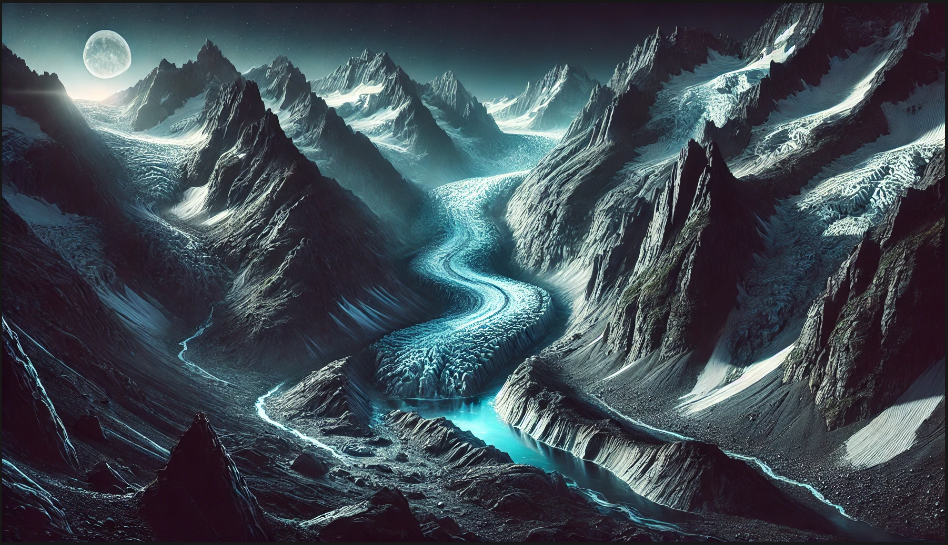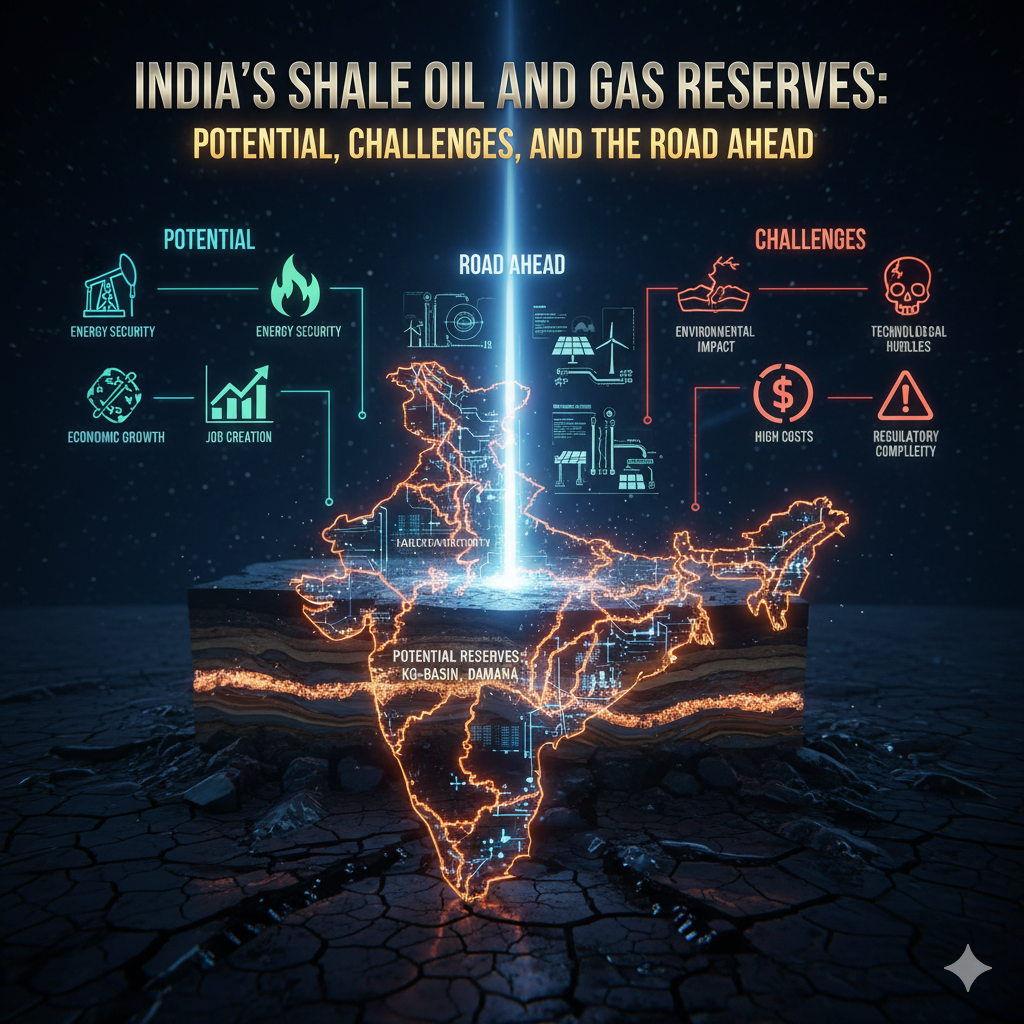Introduction
Glaciers are among the most powerful geological agents shaping the Earth’s surface. In high mountain areas, they play a crucial role in sculpting landscapes through processes of erosion, transportation, and deposition. Over thousands of years, glaciers carve valleys, form unique landforms, and leave behind distinctive geological features that define high-altitude terrains. These changes are a testament to the sheer power of glacial movement, which continues to impact mountain landscapes worldwide.
This article explores the role of glaciers in shaping landforms in high mountain areas, detailing the processes involved and the various geomorphological features they create.
Understanding Glaciers and Their Movement
A glacier is a massive, slow-moving body of ice formed from accumulated snowfall over long periods. The movement of glaciers occurs due to gravity, internal deformation, and basal sliding. The dynamic nature of glaciers allows them to modify the landscape in several ways, making them an essential force in the shaping of high-altitude regions.
Types of Glaciers in High Mountain Areas
- Valley Glaciers: These glaciers flow through mountain valleys and are responsible for carving deep, U-shaped valleys.
- Cirque Glaciers: Small glaciers that occupy bowl-shaped depressions on mountain slopes, leading to the creation of distinctive landforms.
- Piedmont Glaciers: Formed when valley glaciers spread out onto lower lands, depositing large amounts of sediment and ice.
- Hanging Glaciers: Found on steep mountain cliffs, contributing to rockfalls and avalanches, which further modify the terrain.
Glacial Erosion and Landform Formation
Erosion by glaciers occurs through two primary mechanisms: plucking and abrasion. These processes work in conjunction to shape the mountain landscapes in dramatic ways.
1. Plucking
- The process by which a glacier lifts and removes chunks of bedrock as it moves.
- Water seeps into rock cracks, freezes, expands, and dislodges fragments, increasing erosion.
- Contributes to the formation of jagged peaks and rough mountain landscapes, which are common in glaciated regions.
2. Abrasion
- Occurs when glacier ice, mixed with rock debris, grinds against the bedrock.
- Creates smooth, polished surfaces and striations (grooves) on rocks, indicating the direction of past glacial movement.
- Leads to the formation of elongated landforms such as rock drumlins and roche moutonnées.
Major Landforms Created by Glacial Erosion
1. U-Shaped Valleys
- Unlike river-cut V-shaped valleys, glaciers carve deep, broad U-shaped valleys.
- Formed due to the erosive power of thick glacial ice moving through mountain corridors.
- Example: Yosemite Valley in the USA, a classic example of glacial valley formation.
2. Cirques
- Bowl-shaped depressions on mountain slopes where glaciers originate.
- The back wall is steep due to plucking, while the base is gently sloping due to ice accumulation.
- Example: Cirques in the Alps and Himalayas provide insights into past glacial activity.
3. Arêtes and Horns
- Arêtes: Sharp ridges formed between two adjacent cirques as glaciers erode opposite sides of a mountain.
- Horns: Pyramid-like peaks created when several glaciers erode a mountain from different sides.
- Example: The Matterhorn in the Swiss Alps is a striking example of a glacial horn.
4. Hanging Valleys
- Formed when tributary glaciers erode at a slower rate than main valley glaciers.
- These valleys are left suspended above the main glacial trough, often resulting in waterfalls.
- Example: Bridalveil Falls in Yosemite National Park, a stunning example of a hanging valley formation.
5. Fjords
- Deep, narrow coastal valleys carved by glaciers and later flooded by the sea.
- These formations are prevalent in areas with extensive glaciation, such as Norway, Canada, and New Zealand.
- Example: The fjords of Norway attract millions of tourists due to their dramatic landscapes.
Glacial Deposition and Its Landforms
As glaciers melt, they deposit large amounts of debris, forming various depositional features that shape the terrain.
1. Moraines
- Lateral Moraines: Deposits along the sides of glaciers that mark the previous extent of glacial movement.
- Terminal Moraines: Accumulated debris at the glacier’s farthest advance, often forming natural dams.
- Medial Moraines: Formed when two glaciers merge, combining lateral moraines in the center, creating unique ridge formations.
2. Drumlins
- Streamlined, elongated hills composed of glacial till.
- Indicate the direction of past glacier movement and are often found in groups, forming drumlin fields.
- Example: Drumlins in Wisconsin, USA, provide evidence of past ice sheet activity.
3. Eskers
- Sinuous ridges of sand and gravel deposited by meltwater streams beneath glaciers.
- Serve as indicators of past glacial drainage patterns and can be found in various glaciated regions.
- Example: Eskers found in Canada and Ireland offer insights into subglacial meltwater systems.
4. Kames and Kettle Lakes
- Kames: Mounds of sediment deposited by melting glaciers, often forming irregular hills.
- Kettle Lakes: Formed when buried ice blocks melt, leaving depressions filled with water, creating unique freshwater habitats.
- Example: The Great Lakes region in North America features numerous kettle lakes formed during past glaciations.
Impact of Glacial Activity on Human Life
Glacial landscapes are significant for various reasons, impacting both natural ecosystems and human societies.
- Water Resources: Glaciers store freshwater and feed rivers that sustain agriculture and drinking water supplies.
- Tourism: Glacial landforms attract millions of tourists (e.g., the Alps, Himalayas, and Rocky Mountains), boosting local economies.
- Climate Indicators: Glaciers are sensitive to climate change, serving as indicators of global warming and environmental shifts.
- Hazards: Glacial melt can cause floods, landslides, and avalanches, posing risks to mountain communities and infrastructure.
- Hydropower Generation: Many countries rely on glacial meltwater to generate hydroelectric power, ensuring sustainable energy production.
- Biodiversity: Glacial landscapes support unique ecosystems, with cold-adapted species thriving in these environments.
- Scientific Research: Glaciers provide critical data for climate science, helping researchers understand past and future environmental changes.
Conclusion
Glaciers are powerful agents of landscape transformation in high mountain areas. Through erosion and deposition, they create unique landforms that shape the natural environment. Understanding these processes is crucial for appreciating the beauty and significance of glaciated landscapes and for addressing the challenges posed by glacial retreat due to climate change. As glaciers continue to shrink due to rising global temperatures, it is essential to study their impact and develop strategies to mitigate the consequences of their decline. By preserving glacial environments and promoting sustainable practices, we can ensure that these magnificent landscapes remain a part of our planet’s natural heritage for future generations.




